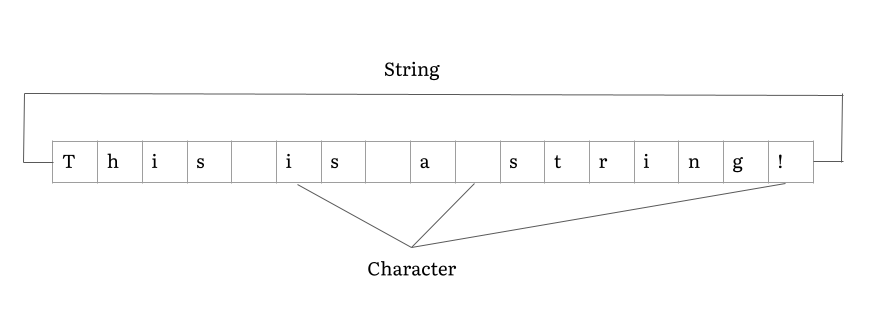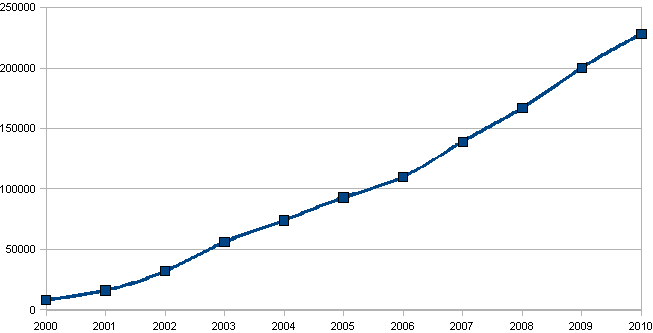|
Ngrep
ngrep (network grep) is a network packet analyzer written by Jordan Ritter. It has a command-line interface, and relies upon the pcap library and the GNU regex library. ngrep supports Berkeley Packet Filter ( BPF) logic to select network sources or destinations or protocols, and also allows matching patterns or regular expressions in the data payload of packets using GNU grep syntax, showing packet data in a human-friendly way. ngrep is an open source application, and the source code is available to download from the ngrep site on SourceForge. It can be compiled and ported to multiple platforms, it works in many UNIX-like operating systems: Linux, Solaris, illumos, BSD, AIX, and also works on Microsoft Windows. Functionality ngrep is similar to tcpdump, but it has the ability to look for a regular expression in the payload of the packet, and show the matching packets on a screen or console. It allows users to see all unencrypted traffic being passed over the network, by putting ... [...More Info...] [...Related Items...] OR: [Wikipedia] [Google] [Baidu] |
Tcpdump
tcpdump is a data-network packet analyzer computer program that runs under a command line interface. It allows the user to display TCP/IP and other packets being transmitted or received over a network to which the computer is attached. Distributed under the BSD license, tcpdump is free software. Tcpdump works on most Unix-like operating systems: Linux, Solaris, FreeBSD, DragonFly BSD, NetBSD, OpenBSD, OpenWrt, macOS, HP-UX 11i, and AIX. In those systems, tcpdump uses the libpcap library to capture packets. The port of tcpdump for Windows is called WinDump; it uses WinPcap, the Windows version of libpcap. History tcpdump was originally written in 1988 by Van Jacobson, Sally Floyd, Vern Paxson and Steven McCanne who were, at the time, working in the Lawrence Berkeley Laboratory Network Research Group. By the late 1990s there were numerous versions of tcpdump distributed as part of various operating systems, and numerous patches that were not well coordinated. Michael Richar ... [...More Info...] [...Related Items...] OR: [Wikipedia] [Google] [Baidu] |
Jordan Ritter
Jordan Ritter (born February 1, 1978) is an American serial entrepreneur, software architect and angel investor. He is best known for his work at Napster, the file-sharing service he co-founded along with Shawn Fanning and others. His time at Napster was documented in Joseph Menn's book ''All the Rave: The Rise and Fall of Shawn Fanning's Napster'' and Alex Winter's film Downloaded. Early life Jordan Ritter was born in Northridge, California and grew up in Texas and Florida. Ritter skipped the 5th grade when he was 10, and later went on to graduate from the International Baccalaureate Program at Hillsborough High School. Ritter attended college at Lehigh University on scholarship, starting as a sophomore and pursuing a double major in music and computer science. He dropped out in 1998, relocating to Boston, Massachusetts to begin his career in computer security. Career Netect Ritter started out in the computer security industry, working as a paid hacker for the Boston off ... [...More Info...] [...Related Items...] OR: [Wikipedia] [Google] [Baidu] |
String (computer Science)
In computer programming, a string is traditionally a sequence of characters, either as a literal constant or as some kind of variable. The latter may allow its elements to be mutated and the length changed, or it may be fixed (after creation). A string is generally considered as a data type and is often implemented as an array data structure of bytes (or words) that stores a sequence of elements, typically characters, using some character encoding. ''String'' may also denote more general arrays or other sequence (or list) data types and structures. Depending on the programming language and precise data type used, a variable declared to be a string may either cause storage in memory to be statically allocated for a predetermined maximum length or employ dynamic allocation to allow it to hold a variable number of elements. When a string appears literally in source code, it is known as a string literal or an anonymous string. In formal languages, which are used in mathematical ... [...More Info...] [...Related Items...] OR: [Wikipedia] [Google] [Baidu] |
Domain Name System
The Domain Name System (DNS) is a hierarchical and distributed naming system for computers, services, and other resources in the Internet or other Internet Protocol (IP) networks. It associates various information with domain names assigned to each of the associated entities. Most prominently, it translates readily memorized domain names to the numerical IP addresses needed for locating and identifying computer services and devices with the underlying network protocols. The Domain Name System has been an essential component of the functionality of the Internet since 1985. The Domain Name System delegates the responsibility of assigning domain names and mapping those names to Internet resources by designating authoritative name servers for each domain. Network administrators may delegate authority over sub-domains of their allocated name space to other name servers. This mechanism provides distributed and fault tolerance, fault-tolerant service and was designed to avoid a single ... [...More Info...] [...Related Items...] OR: [Wikipedia] [Google] [Baidu] |
SMTP
The Simple Mail Transfer Protocol (SMTP) is an Internet standard communication protocol for electronic mail transmission. Mail servers and other message transfer agents use SMTP to send and receive mail messages. User-level email clients typically use SMTP only for sending messages to a mail server for relaying, and typically submit outgoing email to the mail server on port 587 or 465 per . For retrieving messages, IMAP (which replaced the older POP3) is standard, but proprietary servers also often implement proprietary protocols, e.g., Exchange ActiveSync. SMTP's origins began in 1980, building on concepts implemented on the ARPANET since 1971. It has been updated, modified and extended multiple times. The protocol version in common use today has extensible structure with various extensions for authentication, encryption, binary data transfer, and internationalized email addresses. SMTP servers commonly use the Transmission Control Protocol on port number 25 (for plaintext) and ... [...More Info...] [...Related Items...] OR: [Wikipedia] [Google] [Baidu] |
HTTP
The Hypertext Transfer Protocol (HTTP) is an application layer protocol in the Internet protocol suite model for distributed, collaborative, hypermedia information systems. HTTP is the foundation of data communication for the World Wide Web, where hypertext documents include hyperlinks to other resources that the user can easily access, for example by a mouse click or by tapping the screen in a web browser. Development of HTTP was initiated by Tim Berners-Lee at CERN in 1989 and summarized in a simple document describing the behavior of a client and a server using the first HTTP protocol version that was named 0.9. That first version of HTTP protocol soon evolved into a more elaborated version that was the first draft toward a far future version 1.0. Development of early HTTP Requests for Comments (RFCs) started a few years later and it was a coordinated effort by the Internet Engineering Task Force (IETF) and the World Wide Web Consortium (W3C), with work later moving to ... [...More Info...] [...Related Items...] OR: [Wikipedia] [Google] [Baidu] |
Promiscuous Mode
In computer networking, promiscuous mode is a mode for a wired network interface controller (NIC) or wireless network interface controller (WNIC) that causes the controller to pass all traffic it receives to the central processing unit (CPU) rather than passing only the frames that the controller is specifically programmed to receive. This mode is normally used for packet sniffing that takes place on a router or on a computer connected to a wired network or one being part of a wireless LAN. Interfaces are placed into promiscuous mode by software bridges often used with hardware virtualization. In IEEE 802 networks such as Ethernet or IEEE 802.11, each frame includes a destination MAC address. In non-promiscuous mode, when a NIC receives a frame, it drops it unless the frame is addressed to that NIC's MAC address or is a broadcast or multicast addressed frame. In promiscuous mode, however, the NIC allows all frames through, thus allowing the computer to read frames intended for ... [...More Info...] [...Related Items...] OR: [Wikipedia] [Google] [Baidu] |
Regular Expression
A regular expression (shortened as regex or regexp; sometimes referred to as rational expression) is a sequence of characters that specifies a search pattern in text. Usually such patterns are used by string-searching algorithms for "find" or "find and replace" operations on strings, or for input validation. Regular expression techniques are developed in theoretical computer science and formal language theory. The concept of regular expressions began in the 1950s, when the American mathematician Stephen Cole Kleene formalized the concept of a regular language. They came into common use with Unix text-processing utilities. Different syntaxes for writing regular expressions have existed since the 1980s, one being the POSIX standard and another, widely used, being the Perl syntax. Regular expressions are used in search engines, in search and replace dialogs of word processors and text editors, in text processing utilities such as sed and AWK, and in lexical analysis. Most gener ... [...More Info...] [...Related Items...] OR: [Wikipedia] [Google] [Baidu] |
Operating Systems
An operating system (OS) is system software that manages computer hardware, software resources, and provides common services for computer programs. Time-sharing operating systems schedule tasks for efficient use of the system and may also include accounting software for cost allocation of processor time, mass storage, printing, and other resources. For hardware functions such as input and output and memory allocation, the operating system acts as an intermediary between programs and the computer hardware, although the application code is usually executed directly by the hardware and frequently makes system calls to an OS function or is interrupted by it. Operating systems are found on many devices that contain a computer from cellular phones and video game consoles to web servers and supercomputers. The dominant general-purpose personal computer operating system is Microsoft Windows with a market share of around 74.99%. macOS by Apple Inc. is in second place (14.84%), and th ... [...More Info...] [...Related Items...] OR: [Wikipedia] [Google] [Baidu] |
UNIX-like
A Unix-like (sometimes referred to as UN*X or *nix) operating system is one that behaves in a manner similar to a Unix system, although not necessarily conforming to or being certified to any version of the Single UNIX Specification. A Unix-like application is one that behaves like the corresponding Unix command or shell. Although there are general philosophies for Unix design, there is no technical standard defining the term, and opinions can differ about the degree to which a particular operating system or application is Unix-like. Some well-known examples of Unix-like operating systems include Linux and BSD. These systems are often used on servers, as well as on personal computers and other devices. Many popular applications, such as the Apache web server and the Bash shell, are also designed to be used on Unix-like systems. One of the key features of Unix-like systems is their ability to support multiple users and processes simultaneously. This allows users to run multipl ... [...More Info...] [...Related Items...] OR: [Wikipedia] [Google] [Baidu] |
SourceForge
SourceForge is a web service that offers software consumers a centralized online location to control and manage open-source software projects and research business software. It provides source code repository hosting, bug tracking, mirroring of downloads for load balancing, a wiki for documentation, developer and user mailing lists, user-support forums, user-written reviews and ratings, a news bulletin, micro-blog for publishing project updates, and other features. SourceForge was one of the first to offer this service free of charge to open-source projects. Since 2012, the website has run on Apache Allura software. SourceForge offers free hosting and free access to tools for developers of free and open-source software. , the SourceForge repository claimed to host more than 502,000 projects and had more than 3.7 million registered users. Concept SourceForge is a web-based source code repository. It acts as a centralized location for free and open-source software pr ... [...More Info...] [...Related Items...] OR: [Wikipedia] [Google] [Baidu] |



